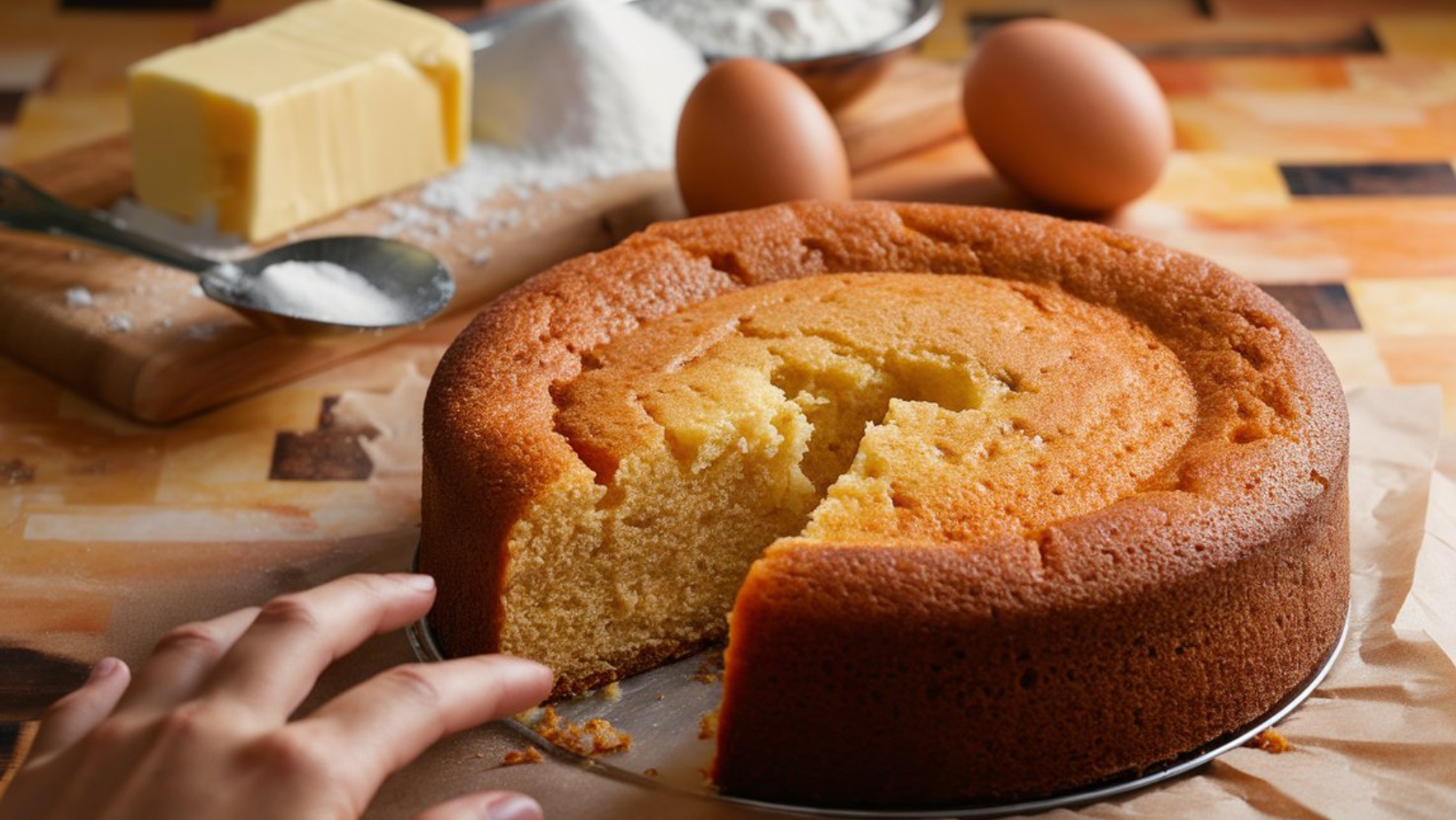Introduction
Why is butter cake so good? Honestly, it’s like asking why the sky is blue—it just is! But, of course, there’s more to it. This beloved dessert staple has charmed its way onto our plates and into our hearts for generations. In this article, we’ll delve deep into the secrets behind the irresistible allure of butter cake, from its rich ingredients to the time-tested techniques that make it a celebration favorite. So, buckle up as we embark on a delicious journey to uncover why butter cake remains a perennial delight!
Introduction to Butter Cake
The Timeless Appeal of Butter Cake
Why do we find butter cake so captivating? It starts with its simplicity. The golden crust and soft, fluffy interior speak of home, comfort, and celebrations. It’s the cake that waits on the kitchen counter, welcoming everyone home. Whether for birthdays, anniversaries, or just a Sunday afternoon, butter cake embodies sweet simplicity.
Key Ingredients That Make Butter Cake Irresistible
Every ingredient in butter cake plays a pivotal role. Butter, the star, lends moist texture and deep flavor. Sugar not only sweetens but also aerates the batter, adding lightness. Eggs bind the batter, providing structure and stability. Flour supports all ingredients, aiding the cake as it rises.
Together, these ingredients create a symphony of flavors and textures. They make butter cake a timeless treat. A dash of vanilla or lemon zest can elevate the flavor, turning simple into sublime.
The magic of a great butter cake lies not just in its taste but in the joy it brings to those who share it. It’s a reminder of tradition and comfort baked to perfection. Enjoy a slice and remember: you’re tasting a piece of culinary heritage.
The Role of Ingredients in Butter Cake
Butter: The Star of the Show
At the heart of every delicious butter cake is, unsurprisingly, butter. This isn’t just any ingredient; it’s the cornerstone that imparts richness and tender moistness to the cake. When butter is creamed with sugar, it traps air, which later expands in the heat of the oven to give the cake its signature lightness and fluffiness. The quality of butter is paramount here—opt for a good, high-fat butter to ensure that your cake tastes as heavenly as it should.
The Science Behind Using Butter in Cakes
But why butter, specifically? Butter contains milk solids and fat, which contribute to the browning and flavor of the cake. During baking, the fat melts, creating steam and air pockets that lighten the texture. The milk solids caramelize and undergo the Maillard reaction, contributing to a golden-brown crust and a depth of flavor that is simply irreplaceable.
Sugar and Its Dual Role
Sugar in butter cake does more than sweeten the mix; it’s a key player in the texture and color of the cake. When beaten with butter, sugar helps to aerate the mixture, contributing to the softness of the crumb. It also attracts moisture, which means cakes with sugar stay moister longer than those without.
The Importance of Eggs in the Structure
Eggs are essential for binding the ingredients together and for building structure. They help emulsify the batter, which means they blend water- and fat-soluble ingredients to create a smooth, unified mixture. The proteins in eggs coagulate when heated, helping the cake to set as it bakes.
Flour – The Foundation
Flour isn’t just filler; it’s the skeleton of the cake. The gluten in flour provides the necessary structure to hold all the air incorporated during mixing, which is crucial for the cake’s stability and rise. However, too much gluten can make the cake tough, which is why cakes typically use all-purpose or cake flour, which has a lower protein content than bread flour.
Leavening Agents and Their Chemical Reactions
Leavening agents, like baking powder or baking soda, release gases into the batter, causing it to rise and become light and airy. The choice between baking powder and baking soda depends on the other ingredients’ acidity levels. Baking powder is generally used when there are no or low acidic ingredients, whereas baking soda is used when there’s an acid to react with, such as buttermilk or yogurt.
In sum, each ingredient in a butter cake is meticulously chosen and balanced to contribute to the final product’s flavor, texture, and appearance. From the rich, creamy butter to the structure-building flour, every component works in harmony to create a cake that’s as delightful to eat as it is to present.
Baking Techniques That Enhance Flavor and Texture
Creaming Method: Ensuring Fluffiness
One crucial technique for making a perfect butter cake is the creaming method. This involves beating butter and sugar together until light and fluffy, which takes several minutes. This step is key as it incorporates air into the batter. This air expands during baking, helping the cake rise and stay light. It’s essential not to rush this step. Proper creaming ensures that the sugar almost dissolves, leading to a finer crumb.
Importance of Oven Temperatures and Baking Time
The baking temperature is crucial for butter cake. If the oven is too hot, the outside cooks too quickly, leaving a peak in the middle and potentially burning the exterior before the inside sets. Too cool, and the cake won’t rise well, leading to a dense texture. Most butter cakes bake well at about 350°F (177°C). It’s also important to avoid opening the oven door too soon, as the rush of cool air can make the cake collapse.
Mixing Techniques to Avoid Common Pitfalls
Mixing seems straightforward, but it can lead to pitfalls affecting the cake’s texture. Overmixing the batter after adding flour can activate the gluten too much, resulting in a tough cake. Undermixing might leave dry pockets of ingredients. The best approach is to mix until just combined. Often, finishing the last bit of mixing by hand with a spatula ensures the batter is uniform without overworking it.
By following these meticulous techniques, from creaming to careful oven monitoring and thoughtful mixing, you can ensure your butter cake turns out as good as possible. Each step, simple in itself, plays a vital role in creating a cake that’s a delight to eat and serve. for more insights into the science of baking and how different ingredients interact, feel free to visit Epicurious.
Variations and Customizations
Classic vs. Modern Twists
The classic butter cake is a marvel in its traditional form, but it also serves as a fantastic canvas for creativity. Modern twists on this timeless recipe can include adding new flavors or substituting ingredients to cater to dietary preferences or just to spice things up. For instance, incorporating orange zest or almond extract can bring a fresh dimension to the familiar vanilla base.
Adding Flavors and Ingredients for a Unique Twist
Experimentation is key to keeping the butter cake exciting. You can add layers of flavor complexity by incorporating ingredients like spices (think cinnamon, nutmeg, or cardamom), fruit purees, or nuts. For a richer experience, swirls of caramel or dollops of fruit preserves can be folded into the batter before baking, creating delightful surprises in every slice.
Additionally, adapting the cake to various dietary needs can also be a way to modernize the classic. Using gluten-free flour blends or plant-based butters can make the cake accessible to those with dietary restrictions without compromising on taste or texture. Each customization not only personalizes the cake but also refreshes its appeal, ensuring it remains a favorite no matter the audience.
In the next section, we will delve into the nutritional aspects of butter cake, providing insights into its caloric content and offering tips for those watching their diet but still wanting to indulge in this delightful treat.
Health Aspects
Caloric Content and Serving Sizes
Butter cake, with its delightful taste, also comes with a consideration for those mindful of their caloric intake. A typical slice of butter cake contains a significant amount of calories primarily due to the high butter and sugar content. Understanding serving sizes can help manage calorie consumption without completely foregoing this indulgent treat. Smaller portions or enjoying it on special occasions can be a practical approach to include this dessert in a balanced diet.
Dietary Considerations: Gluten and Dairy
For individuals with specific dietary needs, such as those avoiding gluten or dairy, enjoying a traditional butter cake might present some challenges. However, there are numerous alternatives that can be employed to create a butter cake that aligns with these dietary restrictions. Gluten-free flour mixes that substitute traditional wheat flour and plant-based butter or margarine can be used to accommodate these needs without sacrificing flavor or texture. Additionally, the use of lactose-free milk or dairy alternatives like almond or oat milk ensures that even those with dairy restrictions can enjoy a slice of butter cake.
By being conscious of the health aspects associated with butter cake, both in terms of caloric content and dietary restrictions, bakers can make informed choices about how to prepare and serve this classic dessert. This awareness allows everyone, regardless of dietary preferences or health considerations, to enjoy butter cake in a way that suits them best.
Frequently Asked Questions
How can I make my butter cake moist and fluffy?
Achieving a moist and fluffy texture in your butter cake begins with the right balance of ingredients and proper baking techniques. Make sure your butter is at room temperature before creaming it with sugar to create a light, airy base. Also, avoid overbaking; remove the cake from the oven as soon as a tester comes out clean to prevent drying. Adding a tablespoon of sour cream or yogurt to the batter can further enhance the cake’s moisture.
What are the best toppings and pairings for butter cake?
Butter cake pairs well with various toppings. For simplicity, dust the cake with powdered sugar or drizzle with a vanilla glaze. For a richer treat, top with fresh berries, whipped cream, or homemade fruit compote. it also complements coffee or tea, making it perfect for breakfast or an afternoon snack.
Can butter cake be made vegan or gluten-free?
Yes, you can adapt butter cake recipes to be vegan or gluten-free without losing the delicious taste and texture. Use plant-based butters and milk substitutes like almond or soy milk for a vegan version, and replace eggs with applesauce, mashed bananas, or commercial egg replacers. For a gluten-free cake, opt for a trusted gluten-free flour blend and ensure all other ingredients like baking powder are gluten-free too.
By addressing these common questions, we hope to enhance your baking skills and encourage you to experiment with this classic recipe, making it your own. Whether tweaking it to fit dietary needs or aiming for the perfect texture and flavor, the journey to mastering butter cake is as rewarding as enjoying the final product.
Conclusion
The enduring popularity of butter cake isn’t just about its rich flavor and tender crumb. It’s also about the memories it creates. Each slice is a reminder of home, a celebration, or a simple, joyful moment. Whether it’s served at a grand wedding or a cozy family dinner, butter cake holds a special place in the hearts of those who enjoy it.
In this article, we’ve explored the science behind its ingredients and the art of its preparation. We’ve shared tips for making your butter cake moister and fluffier, ideas for adapting it to suit any dietary need, and suggestions for toppings and pairings that enhance its deliciousness.
Ultimately, the magic of butter cake lies in its simplicity and the pleasure it brings. It’s a testament to the fact that the best culinary creations are those that stand the test of time. They adapt to the tastes of each generation while still holding true to their roots.
Thank you for joining us on this delightful journey through the world of butter cake. May your baking adventures bring as much happiness as a well-made it brings to a sunny afternoon or festive gathering. Here’s to many more sweet moments, one slice at a time!

